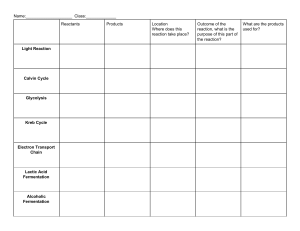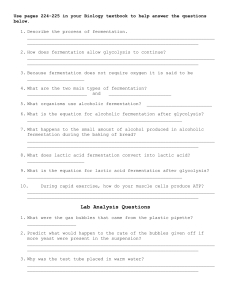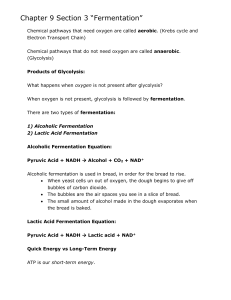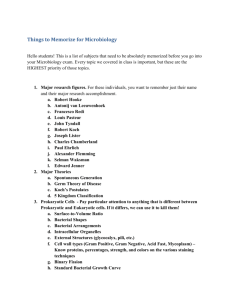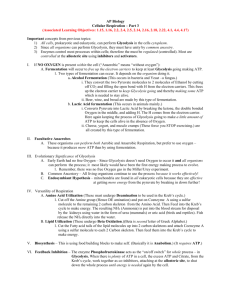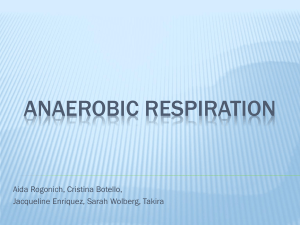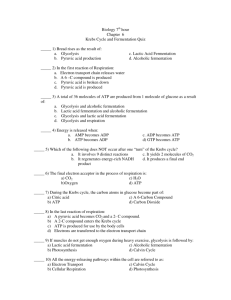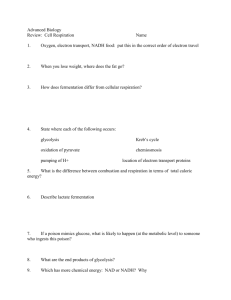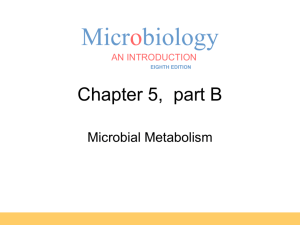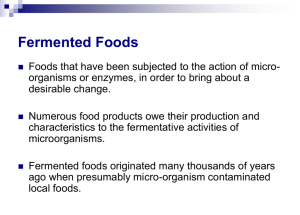Bio 393 – Chapter 2 and 4 Test Review Guide
advertisement
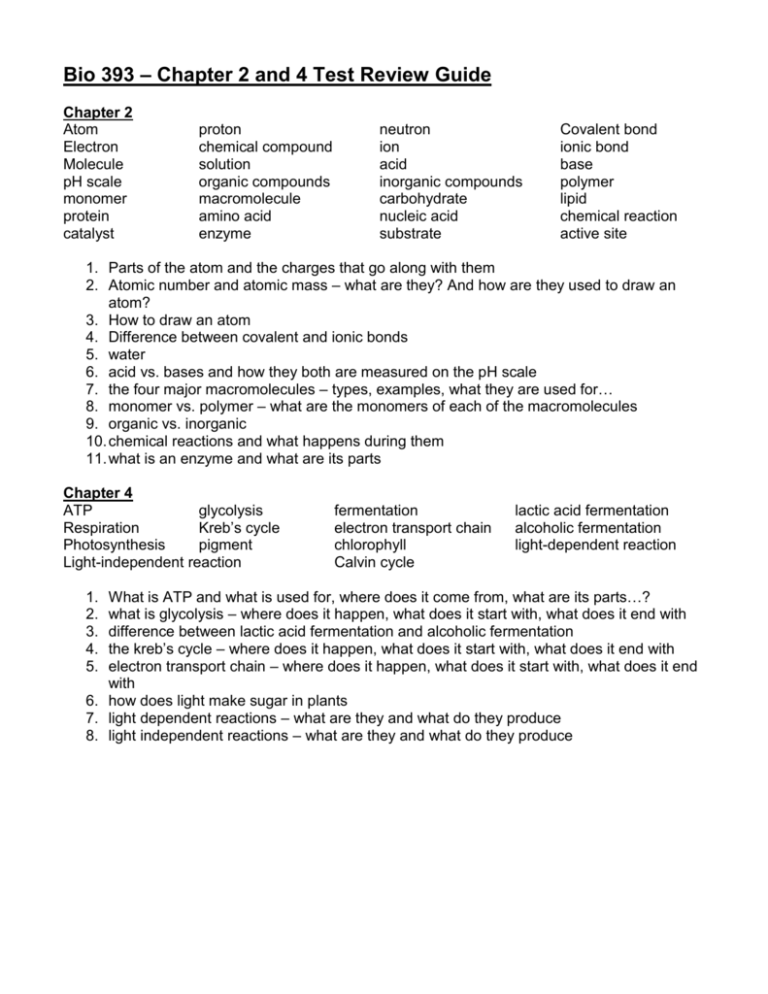
Bio 393 – Chapter 2 and 4 Test Review Guide Chapter 2 Atom Electron Molecule pH scale monomer protein catalyst proton chemical compound solution organic compounds macromolecule amino acid enzyme neutron ion acid inorganic compounds carbohydrate nucleic acid substrate Covalent bond ionic bond base polymer lipid chemical reaction active site 1. Parts of the atom and the charges that go along with them 2. Atomic number and atomic mass – what are they? And how are they used to draw an atom? 3. How to draw an atom 4. Difference between covalent and ionic bonds 5. water 6. acid vs. bases and how they both are measured on the pH scale 7. the four major macromolecules – types, examples, what they are used for… 8. monomer vs. polymer – what are the monomers of each of the macromolecules 9. organic vs. inorganic 10. chemical reactions and what happens during them 11. what is an enzyme and what are its parts Chapter 4 ATP glycolysis Respiration Kreb’s cycle Photosynthesis pigment Light-independent reaction fermentation electron transport chain chlorophyll Calvin cycle lactic acid fermentation alcoholic fermentation light-dependent reaction What is ATP and what is used for, where does it come from, what are its parts…? what is glycolysis – where does it happen, what does it start with, what does it end with difference between lactic acid fermentation and alcoholic fermentation the kreb’s cycle – where does it happen, what does it start with, what does it end with electron transport chain – where does it happen, what does it start with, what does it end with 6. how does light make sugar in plants 7. light dependent reactions – what are they and what do they produce 8. light independent reactions – what are they and what do they produce 1. 2. 3. 4. 5.
